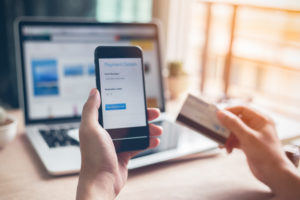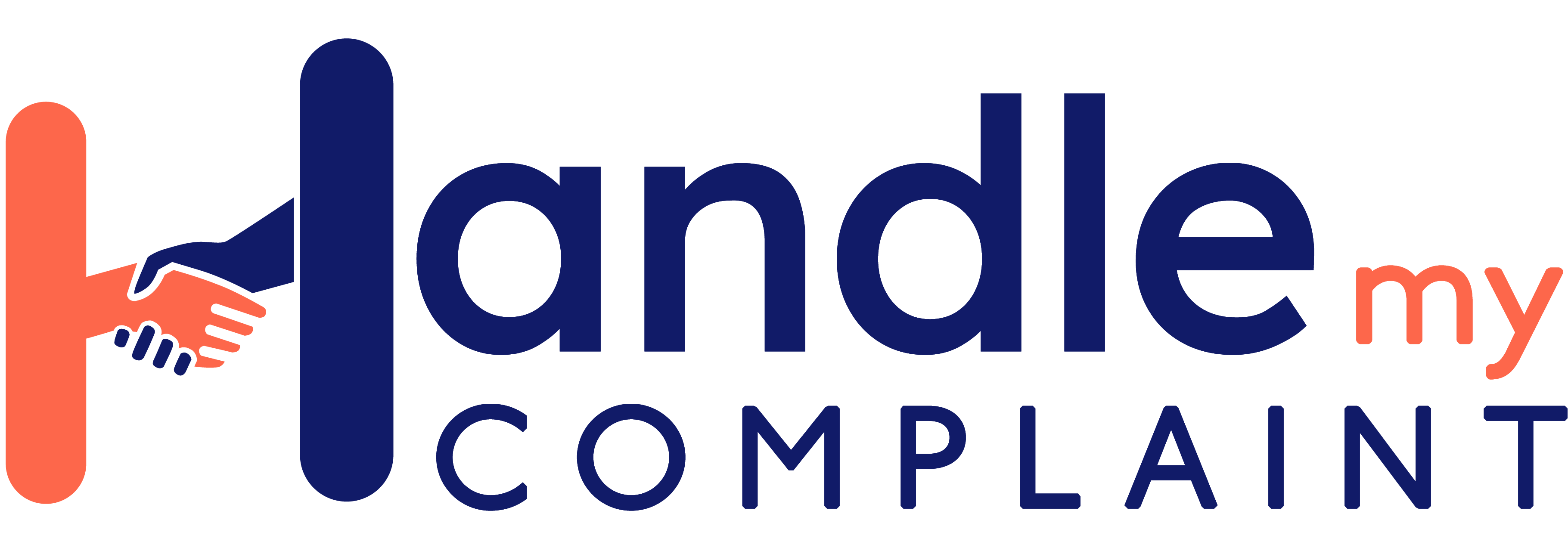
Pay attention: Your guide to online payment platforms
Online payment has certainly made our lives easier. It's become more convenient for us to shop online, pay for bills and send money to family and friends.
So it’s probably no surprise that the FIS Global Payments Report predicts the use of cash will drop from 7 percent to 2 percent of all point-of-sale transactions by 2025.
FIS, a payments technology company, says the pandemic has only accelerated our move to digital wallets and other e-commerce, or online payment platforms.
In 2021, online payment transactions in Australia were estimated at $110 billion, according to Statista. This accounts for online shopping, mobile payments and online remittances. That's an almost 47 percent jump from 2020's $75 billion in transactions. And it's only going to climb higher as more online payment platforms emerge.
The rise of online transactions has naturally had a huge impact on cash payments, with the Reserve Bank of Australia reporting that since 2013 less than 20 percent of businesses have been using cash transactions.
So what are online payment platforms and how are we using them?
What are the online payment platforms in Australia?
The most popular online payment platforms in Australia include PayPal, Visa, Mastercard, and American Express. Then there are digital wallets such as Google Pay and Apple Pay for mobile payments, and POLi and BPAY for bank transfers.
Credit/charge cards were the most popular online payment option in 2021, accounting for 33 percent of total transactions, according to FIS. However, digital wallets are rapidly gaining ground: they made up 26 percent of all internet transactions last year and by 2025 are expected to have eclipsed credit cards as the most popular online payment option in Australia.
Buy Now, Pay Later (BNPL), one of the newest entrants to the field of e-commerce, is also becoming more prominent. With Afterpay and Zip accounting for 11 percent of the market.
Credit cards/debit cards
This form of online payment is one we’re all familiar with. A credit card or debit card gives the holder a set amount of funds that can be used like cash. A credit card holder borrows money from the credit card company and then pays it back over time — with interest, if it is not paid in full by the due date.

Debit cards are linked directly to your bank accounts, so when you pay for an item using one, it’s with money you have in that account.
The biggest credit cards are Visa, Mastercard and American Express while the biggest debit cards are Visa Debit and Mastercard Debit.
The main benefits of these cards are that they offer convenience and security. You don't have to carry cash with you all the time. The down sides, at least with credit cards, is that you can quickly rack up debt if you're not careful. Credit card companies often charge high interest rates. In 2021, a news.com.au survey found that more than 90 percent of Aussies carry credit card debt and almost half of them have debts of more than $5000.
Debit cards can also be subject to bank fees, depending on the type of account you have.
There are a few different types of credit cards: standard, rewards, low interest, balance transfer and student. There are also different debit cards: daily transaction limit, no monthly fee and loyalty programs.
When choosing a card, it's important to consider what you need. If you're looking for a rewards program, a standard credit card is unlikely to be for you. If you’re worried about high interest on your current card, you can look for an interest-free or low-interest deal with a balance transfer to another provider.
It's also important to consider the fees associated with each card. Some credit cards have an annual fee, while others don't. The same with debit cards. There is also often a big variation in interest rates charged, so it always pays to do your research on a credit card comparison site to see how much it will really cost you.
Digital wallets
Digital wallets such as PayPal, Apple Pay and Google Pay are a relatively new way to pay for things online. They allow you to store your credit card and debit card information in one place on your mobile phone and then use it to buy items online or in-store.
They're convenient and secure, as you don't have to carry around your credit cards or debit cards or worry about them getting lost or stolen. But of course, if you lose your phone, you’ll have to start all over again!
They can also be a little bit confusing to set up at first, and not everyone accepts them yet. Some debit cards can’t be stored in digital wallets, either. But as more people start using them, the number of businesses that accept the likes of Google Pay will continue to grow.
Digital wallet providers usually don't charge anything to use them. However, some banks may charge a small fee for using their digital wallet service. But, compared with credit cards, digital wallets are a much cheaper way to pay for things online.
Other platforms
BPAY and POLi are two more popular online payment platforms in Australia. BPAY allows you to pay bills and invoices online using your bank account. While POLi allows you to pay for goods and services directly from your bank account.
POLi, a division of Australia Post, is a great option for consumers who don’t have credit cards or would rather not use them for online purchases. Consumers are guided through the process, which doesn’t require registration. And when the funds are transferred, both the consumer and the merchant receive payment notification.

Most banks and credit unions have a set number of ‘free’ BPAY transactions each month, after which they charge fees. Individual BPAY fees may appear to be rather harmless at 15-60 cents each. But they add up quickly if you make numerous small transactions. POLi doesn’t charge customers and encourages merchants not to do so, either.
However, not everyone accepts BPAY or POLi, so you may not be able to use them for all your online purchases. Also, payments may not be instant with BPAY, unless it’s the same bank, so it’s not a great option if your bill is due the same day you’re paying.
Why is there so much choice in payment platforms?
The answer is simple. Because there's demand for it. In a country where cash is no longer king, people are looking for ways to pay that are more convenient and secure. As the FIS report says: “Selling to Australian consumers demands a broad mix of payment methods. Visa, Mastercard and EFTPOS are essential, while Apple Pay, Google Pay, WeChat Pay and Alipay are increasingly expected. Don’t forget BNPL, which can boost conversion rates.”
And with the rise of online shopping, digital payments have become more important than ever. Online payment platforms provide a safe, easy and fast way to shop online without having to worry about your personal information being stolen. Or at least that’s what the marketing ads tell us.
Also, there's money in it for companies. There are some fees involved in every transaction you make. PayPal, for example, besides charging you or your recipient with a service fee, has a lower exchange rate if you're sending money abroad. If your recipient chooses to instantly withdraw the money you sent to their nominated bank account, there's an extra one percent fee. Otherwise, they have to wait up to five business days. With more people using online payment platforms, that means more money for the companies running them.
How do online payment platforms make money?
Online payment platforms charge fees for transactions, either to the buyer or the seller. For goods and services bought online, the companies behind the credit cards, debit cards and digital wallets charge the merchants and it’s up to the latter to pass on this cost to you. If you’re sending money abroad, there are also currency exchange fees.
For credit and debit cards, providers also rake in dollars from monthly or annual fees, interest rates, late payment fees and other charges. This is not the case for digital wallets, which is why banks are questioning their competitiveness. How can they make their services free when the rest of the platforms are charging? Does the aphorism “If it’s free, you’re the product” apply here?
Online payment platforms may also make money through value-added services such as gateway, referral and subscription fees.
Note that online payment platforms are not banks. They are money management services. Simply put, they don't have money in them. Although in some instances, your online payment platform can overdraw your actual bank account if you have insufficient funds when a payment goes through.
Others claim that if you've been a loyal customer, PayPal allows a transaction to go through even though you don’t have enough money in the account. But there could be fees associated with a negative balance. So it's important to be aware of how much money you have in your account to avoid going into negative territory.
What is the refund process for payments through online platforms?
If you paid for something using an online payment platform and it doesn't arrive, or it's not as described, you may be able to get a refund. The process varies depending on the platform you're using.
Paypal
PayPal, for example, has a dispute resolution process. You'll need to open a case within 180 days of the transaction taking place. You can do this through the PayPal website or app. If you're not happy with the outcome, you can escalate it to a claim.
But there have been complaints about PayPal's refund process. One, it's hard to get hold of their customer service. Yes, they have knowledgebase online, but more often than not, your questions and associated answers are not there. Even reaching them via phone can involve a long wait.
Google Pay
For Google Pay, you can request a refund through the app. You'll need to sign in, go to the transaction history and select the charge you want to dispute. From there, you can tap "Request a refund" and Google will start the process. However, this is applicable only to purchases made on Google’s products and services such as YouTube subscriptions. For third party merchants, you have to contact your bank or the merchant itself.
Apple Pay
With Apple Pay, you can report to them directly and Apple’s customer service will reach out to the merchant or your financial institution.
BPay
For BPay, you'll need to contact your financial institution. If you paid by bank transfer, you may be able to get a refund through the chargeback system. This is where your bank reverses the transaction and puts the money back into your account. Contact your bank and let them know that you want to dispute the transaction so they can start the process.
Poli Payments
For Poli Payments, you'll need to contact the merchant first and ask for a refund.
There are time limits for chargebacks, so you'll need to act fast. For Visa and Mastercard transactions, you have up to 120 days. For American Express, it's 90 days.
It's also important to note that you can only get a refund if you have a valid reason, such as not receiving the item you paid for or receiving an item that's significantly different from the one you ordered. You can't get a refund because you changed your mind or the product didn't work for you.
Always read the fine print.
How do credit cards, BNPL and digital wallets compare?
Credit cards are a good option if you're looking for rewards points. You can also use them to withdraw cash from an ATM or to make purchases in person or online. But, there are usually high fees associated with credit card transactions.

BNPL is a good option if you want to spread the cost of your purchase over time. There aren't usually any fees associated with BNPL transactions. But, you will need to make sure that you can afford the repayments. Because the interest rates can leave you high and dry.
Online payment platforms are a good option if you're looking for convenience or if you want to avoid large fees. But, it's important to remember that not all platforms are created equal. Some have better customer support than others. And some offer more features than others.
Which platforms offer better protection against fraud/scams?
Credit cards generally offer more protection against fraud because you can dispute the charges if you believe that you've been a victim of fraud. Other online payment platforms may not offer as much protection. But, they do have other features that can be helpful, such as callback when you contact customer support so you don’t have to wait in endless queues.
But there have been reports that credit cards are also prone to unauthorised transactions. This is because apparently there is software that makes it easier for scammers to guess your 16-digit card number.
It's important to remember that no one payment method is perfect. So, it's important to do your research before you decide which one is right for you. And get to know the latest scams so you know how to avoid them.
How to make a complaint against a payment platform
The best way to deal with a complaint is to start with the company's or merchant's complaints procedure. If you're not happy with the outcome, then you can contact the Australian Competition and Consumer Commission (ACCC) or your state or territory fair trading authority.
For most of your everyday digital transactions, you can also lodge a complaint with the Australian Financial Complaints Authority. But note that there's a limit to the transactions you can complain about.
If you're not sure where to go, or you’re unhappy with the outcome of a complaint, tell us and we'll handle it for you.






